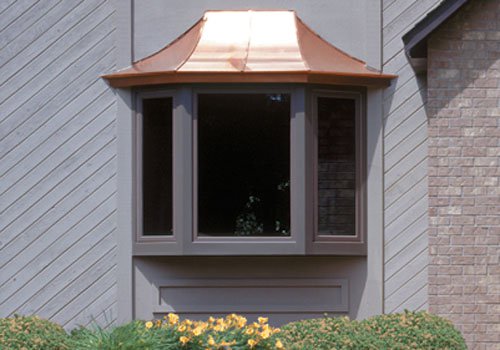

When homeowners discuss leaky windows, they are usually referring to windows in which the glass has separated from the sash material, allowing water and air to flow through. Many wood windows develop leaks as they age, since rot and deterioration start developing in the sash. Cheaper vinyl replacement windows may start leaking when they’re just a few years old due to distortion of the vinyl. In either case, leaky windows are a threat to energy efficiency and can result in water damage. So, how do you know if you have leaky windows in your Indianapolis home? Here are a few ways to check.

1. Watch for water and condensation around the windows.
One of the most obvious signs of leaky windows is the accumulation of water along the inside base of the sill or sash. This will be most visible after a rain storm — especially a windy one during which the rain beats against the window. Also, keep an eye on the space between the window panes. If condensation appears between the panes of glass on a double or triple-pane window, this means air is leaking between the glass. When the temperature drops, moisture condenses out of the air and sticks to the interior of the glass.
2. Look for deterioration and damage.
If it has not rained recently and the weather has not been humid, your leaky windows may not be wet. However, you can still look for signs of leaks. Look for any mold or rot around the window sash, especially in the corners and along the bottom. If the inside of the window is growing mold, then you know it has been wet — probably due to a leak. And if the wood is beginning to deteriorate and rot, leaks are imminent, even if they are not too serious yet.
If you have vinyl windows, take a close look at the vinyl that sits directly against the window glass. If it appears to be warped or bent, then the windows on your Indianapolis home are either leaking or about to start leaking.
3. Stand in front of the windows on a windy day.
It’s not just water you have to worry about. Air blowing in through your windows will also create draftsand drive up your energy bills, especially in the winter months. Wait for a windy day, and spend a few minutes standing in front of your windows. If you feel a breeze, then you have a window leak. This strategy works best for windows set against the prevailing winds, of course.
4. Do the incense test.
For windows that get less wind, take a burning stick of incense, and pass it along the perimeter of the sash on a windy day. If you see the stream of smoke waiver or blow, then you know some air is leaking through the window. It only takes a faint breeze to move the stream of smoke one way or the other, so this strategy works well for detecting minor leaks.
Leaky windows are a threat to your home’s structure and efficiency. What starts off as a small leak can quickly progress, letting substantial water and cold air into your Indianapolis home. If you have leaking windows, contact Renewal by Andersen to schedule a free, in-home consultation. Our replacement windows will remain tightly sealed for years to come.